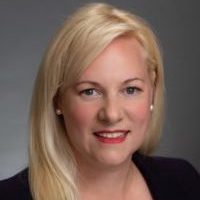4 minutes
Approaching director searches like executive searches can produce great results.
Recently the National Credit Union Administration proposed a new rule that would require all federally insured credit unions to have board succession plans.
Here at Quantum Governance, that proposal prompted a robust conversation among us consultants on the merits and challenges of regulation. And that conversation prompted us to look for ways to lessen the potential burden of increased regulation in this area.
Our instincts to usher in solutions meant getting our arms around an emerging board renewal practiceenlisting a recruiter to help with executing on the board succession plan.
Two Credit Union Case Studies
To learn more about using a recruiter at the board level, we didn’t have to look farther than two credit unions we have had the privilege of working with recently. Both have taken up the challenge of ensuring the future of their board with innovative new thinking that includes hiring a search firm to help recruit board candidates.
For $1.3 billion Utilities Employees Credit Union President/CEO Bret Krevolin, a CUES member, the notion of enlisting the expertise of a corporate recruiter came about because the credit union was looking to diversify its board.
"We were looking to really broaden the experiences, as well as the gender and ethnic diversity of our board," he says. "We didn’t want to recruit the positions in the same way we had before.”
Krevolin and his board hired executive search firm Smith & Wilkinson, Scarborough, Maine, to identify highly desirable board candidates and conduct the initial interviews before recommending them to Krevolin and his board.
Smith & Wilkinson Partner Nick Hayes says that recruiting a board member is different from typical corporate recruiting.
“The main challenge behind recruiting for credit union boards is the time commitment required to ensure that each candidate understands the industry, understands the credit union, and understands the makeup and duties of the board,” he says. “We’ve found that many people are open to hearing about these board roles, and to successfully ‘recruit’ them into running for a board seat, we must take the time to make they understand these three areas.”
$6.4 billion Hudson Valley Credit Union CEO Mary Madden, CCE, and her board also looked to Hayes to help find qualified board volunteers in an increasingly competitive market for talent.
“Many companies use recruiting firms for executive searches, and we had heard of other industries doing the same for board candidates,” says Madden, a CUES member. “Knowing we were entering markets where we lacked a familiarity with local community leaders, the credit union felt engaging an experienced recruiter could facilitate the search for high-caliber board candidates.”
For the last several years, Madden, her board and her management team have been prioritizing improvements to their governance.
“One aspect of that work was defining volunteer roles and responsibilities, writing job descriptions, and identifying key skills and competencies needed to help the credit union succeed,” she notes. “With our industry’s guiding principle of people helping people in mind, we prepared specific information the recruiting firm could use to help us identify the candidates who would add value to our volunteer/management collaboration as we grow closer to a $10 billion cooperative.”
What’s Your Objective?
Hayes says having a clear goal in mind when reaching out to a search firm about recruiting board-level directors is one of the most important steps a credit union needs to take in this process.
“We [the recruiters] need to understand the history of your board and your credit union, and why you are looking to take an active step into putting together an external campaign for a board position,” he explains. “We need to understand if a certain skill set, personality or background will complement the rest of your board, and we need to understand the value it will bring to both sides. We’ll need to spend time with your board to develop a clear value proposition that we can take to market on behalf of your credit union.
Madden champions the work that Hayes is doing and stresses that finding talented volunteers must be an ongoing effort.
“Incumbent board members should consider seeking ways to connect with talent year-round and not simply at election time,” she says. “Involving diverse voices—such as BIPOC (Black, Indigenous, people of color) and LGBTQ+ community groups/leaders—can help you spread the call for candidates, especially in new markets where the credit union may have less brand recognition.
“Nomination committees can be assisted by having senior leaders, volunteers and community leaders identify potential candidates throughout the year so relationships can be built with those who may have interest in serving,” she adds.
In this brave new world of interconnectedness and regulation, the challenges to board recruitment and succession planning remain. However, with a clear vision of your board’s future state and the expertise of an experienced recruiter, your credit union can draw on new talent to further the credit union’s vision and mission.
Gisèle Manole is director of external affairs and a consultant with Quantum Governance, L3C. Her work with credit unions and nonprofit clients, and as a liaison to Quantum Governance’s strategic partner, CUES, leverages her 20-plus years of experience in communications, integrated marketing and public relations.
Quantum Governance provides credit unions, corporations, nonprofits, associations and governmental entities with strategic, cost-effective governance, ethics and management consulting, facilitation and evaluation. With more than 70% of Quantum Governance’s clients representing credit unions, the organization fields more engagements in the credit union community than in any other. The organization is home to more strategic governance experience than any other practice in the country. The firm is a unique L3C organization that integrates the best elements of both the for- and non-profit communities into one practice. It is a low-profit, limited-liability service organization dedicated to the public good and one of the very first such legal hybrid organizations in the United States.










